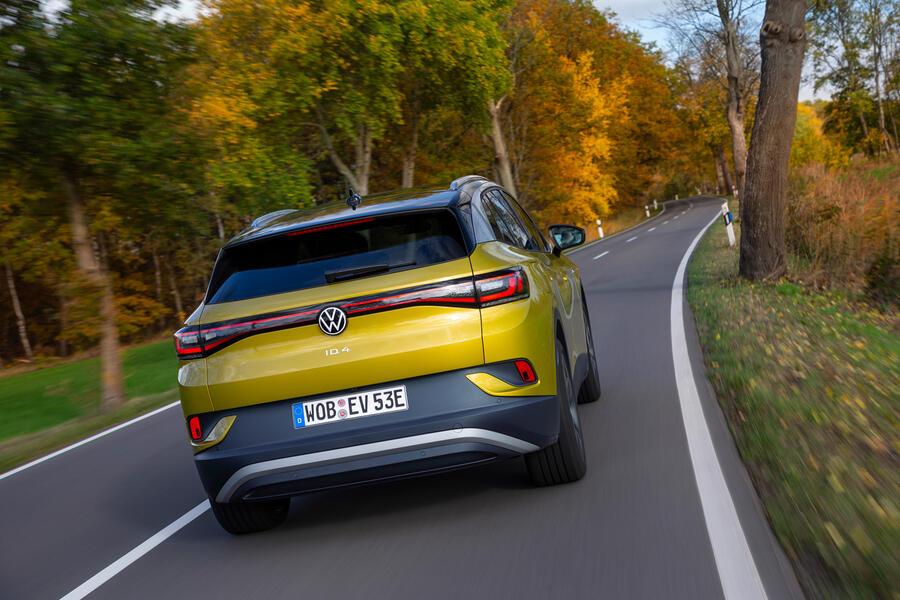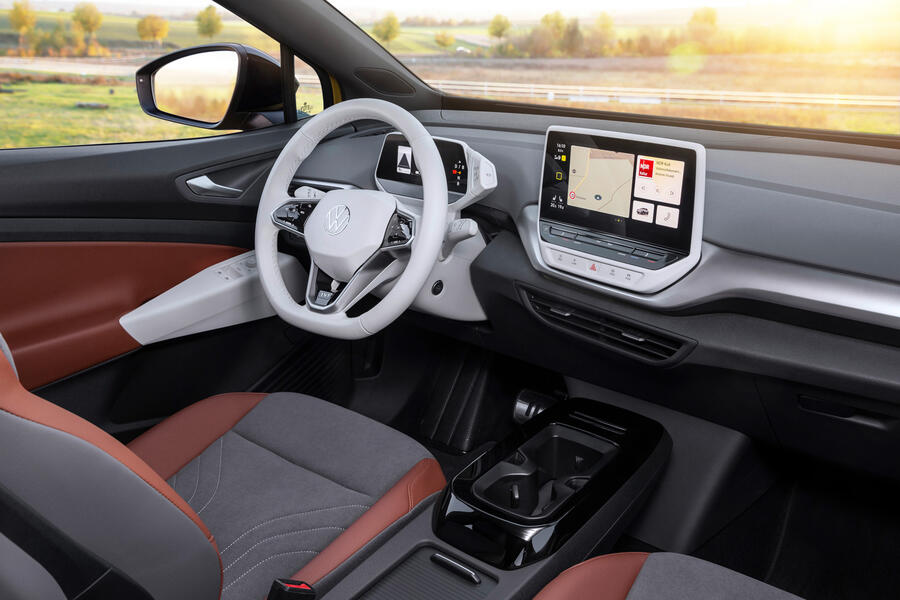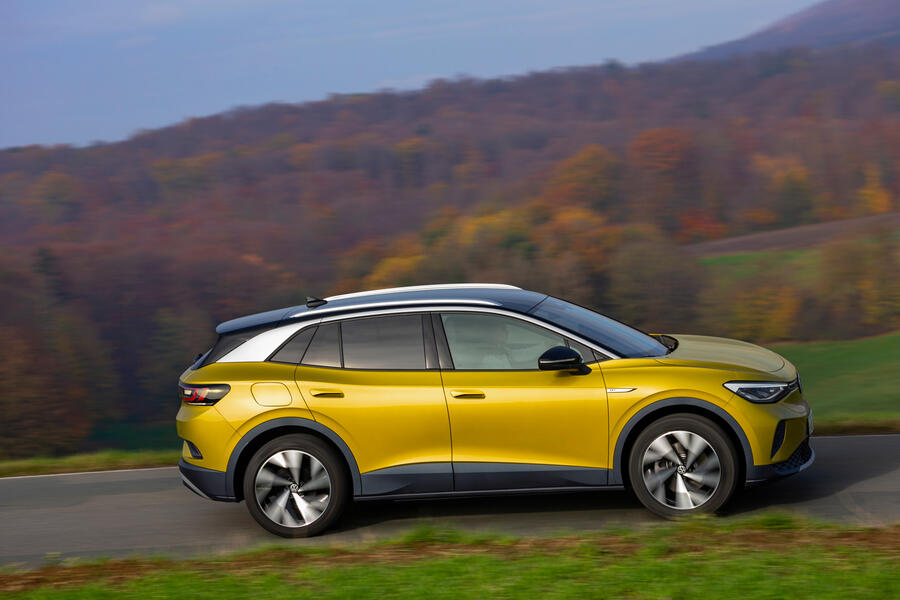What is it?
The new ID 4 is where Volkswagen’s ambitions for global EV sales leadership really begin to take shape. Due to be produced in four manufacturing plants on three continents, the new crossover-style SUV is seen by officials of the German car maker very much as a world car in the mould of the original Beetle and its successor, the Golf.
Following the smaller ID 3 hatchback, with which it shares its MEB platform, the second model from Volkswagen’s ID electric car sub-brand will initially be sold in the UK from February 2021 in single-motor, rear-wheel-drive guise. However, a more powerful, dual-motor, four-wheel-drive model, which is set to usher in the new GTX performance car nomenclature to be used by a number of future ID models, is also due to be added to line-up next April.
The contemporary styling of the ID 4, with its full-width light bands front and rear, will be familiar to anyone who has followed Volkswagen’s carefully choreographed entry into the electric car ranks. It takes the smooth-surfaced appearance of the ID Crozz concept, first wheeled out at the 2017 Shanghai motor show, into production with only minor changes.
It is a modern-looking car with short bonnet proportions unlike any existing Volkswagen SUV and large wheel houses that allow it to accommodate wheels ranging from a standard 18in up to 21in in diameter.
At 4584mm long, 1852mm wide and 1612mm tall, the new Volkswagen model is 75mm longer, 13mm wider and 63mm taller than the standard-wheelbase Tiguan. Its 2766mm wheelbase is the same as that used by the ID 3 and 88mm longer than the Tiguan's.
The drag co-efficient, meanwhile, is well below that of the Tiguan, at 0.28, aided by the almost totally enclosed front end and, on the model tested here, aerodynamically optimised wheel design.
Power comes from a rear-mounted electric motor known as the APP 310 and assembled at Volkswagen’s components plant in Kassel, Germany. It is the same synchronous unit used by the ID 3, offering three levels of power, starting at 146bhp and ranging through 168bhp to the 201bhp of the 1st Max specified version tested here – all with the same 228lb ft of torque.



Join the debate
Add your comment